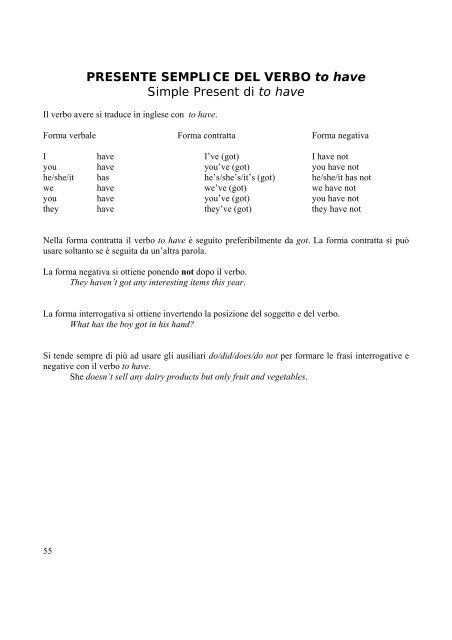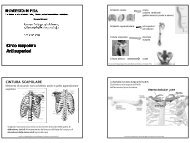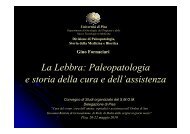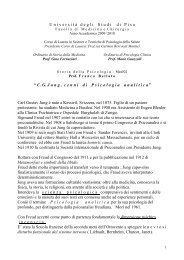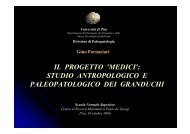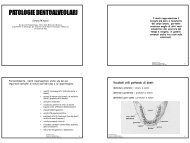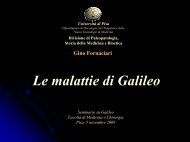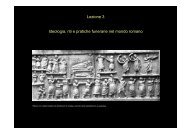Fondamenti della lingua inglese Laura Cignoni - Paleopatologia
Fondamenti della lingua inglese Laura Cignoni - Paleopatologia
Fondamenti della lingua inglese Laura Cignoni - Paleopatologia
You also want an ePaper? Increase the reach of your titles
YUMPU automatically turns print PDFs into web optimized ePapers that Google loves.
55<br />
PRESENTE SEMPLICE DEL VERBO to have<br />
Simple Present di to have<br />
Il verbo avere si traduce in <strong>inglese</strong> con to have.<br />
Forma verbale Forma contratta Forma negativa<br />
I have I’ve (got) I have not<br />
you have you’ve (got) you have not<br />
he/she/it has he’s/she’s/it’s (got) he/she/it has not<br />
we have we’ve (got) we have not<br />
you have you’ve (got) you have not<br />
they have they’ve (got) they have not<br />
Nella forma contratta il verbo to have è seguito preferibilmente da got. La forma contratta si può<br />
usare soltanto se è seguita da un’altra parola.<br />
La forma negativa si ottiene ponendo not dopo il verbo.<br />
They haven’t got any interesting items this year.<br />
La forma interrogativa si ottiene invertendo la posizione del soggetto e del verbo.<br />
What has the boy got in his hand?<br />
Si tende sempre di più ad usare gli ausiliari do/did/does/do not per formare le frasi interrogative e<br />
negative con il verbo to have.<br />
She doesn’t sell any dairy products but only fruit and vegetables.


